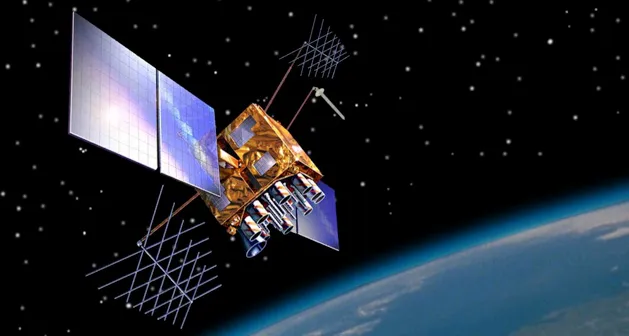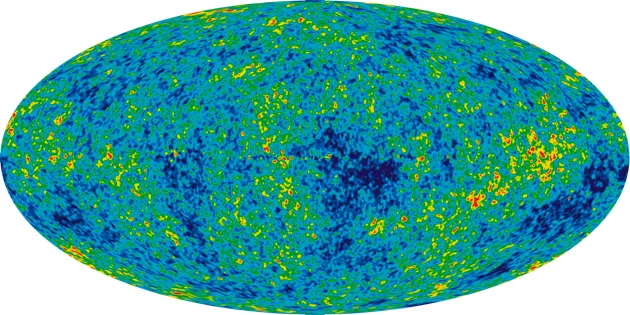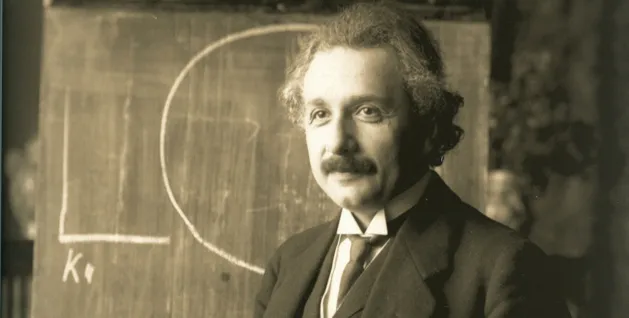Update:Einstein’s mystery of gravitational waves solved
A press conference called by the US National Science Foundation will update the scientific community today on the efforts by scientists to prove the existence of gravitational waves. Expected at around 1530 GMT, scientists from Caltech, MIT and the LIGO Scientific Collaboration will provide a “status report” on the search for ripples in the fabric of spacetime, known as gravitational waves, using the Laser Interferometer Gravitational-wave Observatory (LIGO) (you can watch the announcementhere).
Rumours have been, excusing the pun,making waves for a while now, but even the self-proclaimed “hard-to-convince sceptic” Sir Martin Rees is convinced,writing inThe Telegraphthat these results will be “the culmination of literally decades of effort by scientists and engineers with high credentials,” and that this time he expects to be “fully convinced.”
So, what’s a gravitational wave?
Gravitational waves are ripples in the curvature of spacetime.
Spacetime? Er, hang on… what’s that?
When we look at the world, we usually see it in three dimensions. Physicists and cosmologists, on the other hand, use four dimensions: three spatial dimensions plus a fourth dimension of time. Spacetime is the merging of space and time into one single, interwoven entity. It’s the fabric of the Universe.
Albert Einstein showed with his theory of relativity that space and time are intimately linked. For example, gravity warps both space and time. Objects with a large mass change the shape of spacetime, altering the motion of objects around them.
What’s more, the stronger the gravitational field, the slower the passage of time. Variations in gravity at the Earth's surface are so small that we don't notice anything, but the effect has been measured using atomic clocks on aeroplanes, where the Earth’s gravitational pull is reduced. The phenomenon even affects the clocks on board GPS satellites.

So how do we get waves in spacetime?
Because massive objects warp spacetime, they change its curvature as they move about. Any sudden motion of mass can create tiny distortions in spacetime that travel outwards like ripples across a pond. These are gravitational waves.
Has anyone detected these waves?
Not yet. In 2014scientists at the Harvard-Smithsonian Center for Astrophysicsannounced the first detection of gravitational wavesusing the BICEP2 (Background Imaging of Cosmic Extragalactic Polarization) experiment at the South Pole. This telescope scannedthe sky to study the cosmic microwave background – the thermal radiation left over from the Big Bang. Unfortunately what they discoveredwas found to be noise created by space dust.

Why has it taken so long to detect gravitational waves?
Gravitational waves decrease in amplitude as they travel away from their source. This means that even waves produced by extreme events such as supernovae, merging black holes, or, indeed, the birth of a universe, are extraordinarily faint by the time they reach the Earth.
Why should we care?
Thisannouncement is getting scientists all excited because it could bethe first detection of gravitational waves, confirming the last untested prediction of Einstein’s general theory of relativity.

"Detecting and measuring gravitational waves is the holy grail of Einstein’s theory of General Relativity," saysProfessor Bob Bingham, STFC Physicist atHarwell Campuswho is working on ESA's own hunt for gravitational waves, theLISA Pathfinder."This discovery leads the way to look back in time at the creation of the universe, with significant repercussions for ongoing astronomical research."
In fact, it’s such a major discovery that it’s already being tipped as a shoo-in for a future Nobel Prize.
In a broader sense, the discovery could open up a new era in astronomy. Four hundred years ago, Galileo Galilei explored the cosmos by observing the light given off, or reflected, from distant objects.
More recently, astronomers have turned to other parts of the electromagnetic spectrum. Radio telescopes have allowed us to discover pulsars and quasars, while microwave astronomy revealed the cosmic background radiation. Other advances have been made by observing the Universe with gamma rays, X-rays, ultraviolet light and infrared light.
Just as each technique has revealed new astronomical phenomena, it’s hoped that gravitational waves will allow us to glimpse cosmic marvels that are beyond even our wildest imaginations.
Follow Science Focus onTwitter,Facebook, Instagramand Flipboard